Imagine lying awake for days, your eyes wide open, yet your mind racing with an unsettling intensity. You feel invincible, energized, and razor-sharp, but beneath the surface, your thoughts are fragmented and distorted. Every attempt to slow down is met with an unbearable restlessness, a creeping anxiety that only one thing can alleviate: another hit of ICE.
This is the cruel paradox of Crystal Methamphetamine, commonly known as ICE. It promises boundless energy and clarity but delivers only devastation. As the drug hijacks the brain's reward system, users become trapped in a vicious cycle of craving and consumption. The initial rush gives way to crippling dependence, as the need for increasingly larger doses destroys lives, relationships, and futures.
In Pakistan, ICE has evolved from a study aid and occasional stimulant to a highly addictive and destructive force. Once used by students seeking an edge during exams or professionals needing a temporary energy boost, ICE has morphed into a deadly obsession. This next-level form of Methamphetamine, engineered for maximum potency, has crossed the threshold from use to abuse, ensnaring users in an unyielding grip of addiction.
An alarming number of youngsters are falling prey to ICE's false promises. Its allure is rooted in its ability to induce an intense, fleeting high, masking the crushing consequences that follow. The consequences are dire: ravaged minds, shattered families, and a generation lost to addiction. With its highly addictive nature and easy availability, ICE has become a ticking time bomb, threatening to engulf the country's youth.
As Pakistan grapples with this growing epidemic, it's crucial to understand the factors driving ICE's allure, the devastating consequences of its use, and the challenging journey toward recovery. Here we will explore the complex issues surrounding ICE consumption in Pakistan, arguing that addressing the ICE epidemic requires a multifaceted approach that combines public awareness, community support, and effective treatment options.

Understanding ICE
Crystal Methamphetamine, commonly referred to as ICE, is a highly potent and addictive stimulant that has ravaged lives globally. But what exactly is ICE, and how does it differ from other forms of methamphetamine?
Methamphetamine is a synthetic stimulant that affects the central nervous system, producing euphoric effects. It comes in various forms, including pills, powders, and oily substances. However, ICE stands out as a purer and stronger form of methamphetamine, appearing as small, clear crystals. This distinction is crucial, as ICE's stimulant properties make it more harmful than powdered meth, also known as speed.
The key difference between methamphetamine and ICE lies in their potency and duration of effects. Methamphetamine can produce a high lasting several hours, whereas ICE can induce an intense, long-lasting euphoria that can last up to 24 hours. This prolonged effect makes ICE more addictive and potentially deadly.
When ingested, ICE interacts with the brain's neurotransmitters, releasing an excessive amount of dopamine, a neurotransmitter associated with pleasure, reward, and motivation. This intense dopamine surge creates an euphoric "high," characterized by enhanced energy, alertness, focus, and confidence. However, this artificial dopamine influx comes at a terrible cost. As the brain adapts, users require increasingly larger doses to achieve the same effect, leading to tolerance, dependence, and ultimately, addiction.
The short-term effects of ICE use are alarming. Users experience increased heart rate and blood pressure, dilated pupils, elevated body temperature, reduced sleep and appetite, and increased anxiety, agitation, and paranoia. Impaired judgment and coordination further exacerbate the risks, making accidents and injuries more likely.
Prolonged ICE use can lead to devastating long-term consequences. Neurological damage alters brain structure and function, while cardiovascular problems, such as heart attacks, strokes, and arrhythmias, become increasingly common. Dizziness, blurred vision, irritability, and exhaustion are also the negative effect of ICE. Psychological disorders, including hallucinations, depression, anxiety, and psychosis, also emerge, further complicating the user's life. Social and relationship problems, including isolation, conflicts, and financial ruin, are inevitable. Physical deterioration, marked by malnutrition, tooth decay, and skin problems, completes the grim picture.
Despite its devastating effects, ICE remains appealing due to its easy availability, low cost, and misconceptions about its safety. Peer pressure and social circles also play a significant role in attracting new users. The desire for increased energy, focus, or confidence drives many to try ICE, unaware of the catastrophic consequences that await.
Understanding ICE's chemistry, effects, and allure is crucial for developing effective strategies to combat Pakistan's growing ICE epidemic. By recognizing the complexities of this highly addictive substance, we can begin to address the root causes of its appeal and work towards a comprehensive solution.
Australia's experience with ICE serves as a stark warning. With nearly 7% of its population having tried the drug, Australia has the highest rate of methamphetamine use among English-speaking nations. This translates to 1.3 million people, with youth being particularly vulnerable, as 1.4% of 14-year-olds and above have used ICE in the past year alone.
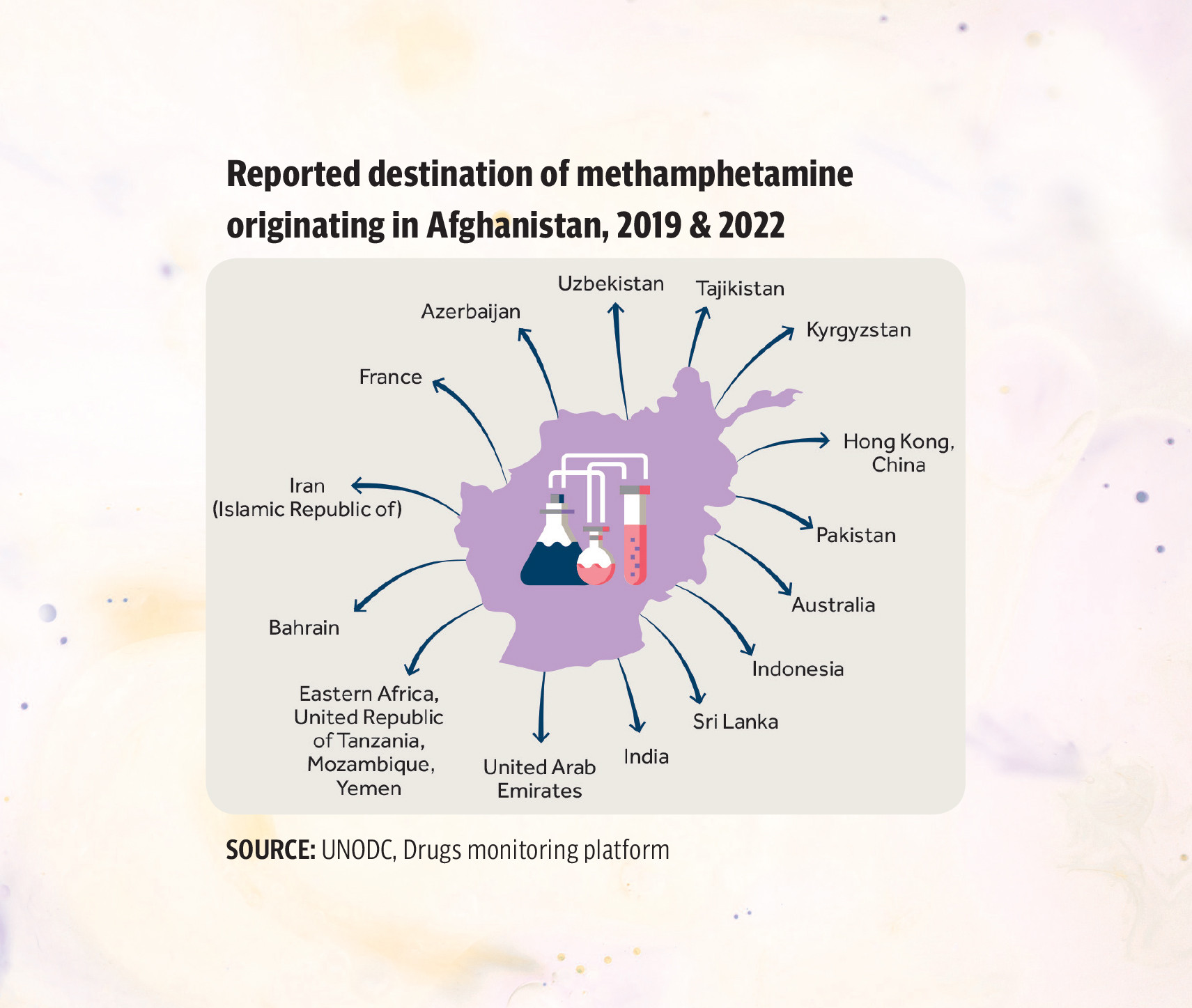
The Pakistan connection
Pakistan's struggle with ICE is similar and deeply concerning, with the country's youth being disproportionately affected. The 2019 Pakistan National Survey on Drug Use and Health revealed alarming trends, indicating that Pakistan has an estimated 860,000 drug users, with ICE use increasingly prevalent among youth. Approximately 4.7% of Pakistan's population aged 15-64 has used methamphetamine at least once, with 1.3% reporting ICE use in the past year. Moreover, a staggering 30% of drug users initiated substance use before the age of 15.
Several factors contribute to Pakistan's ICE epidemic. The country's porous borders and lack of effective law enforcement enable smuggling and distribution, allowing the illicit trade to thrive. Economic instability and unemployment also drive vulnerable individuals to substance abuse, seeking escape from their dire circumstances. Furthermore, limited awareness and education about ICE's dangers hinder prevention efforts, while inadequate healthcare and rehabilitation services exacerbate the crisis.
Key regions in Pakistan have become hotspots for ICE production and distribution. The Pakistan-Afghanistan and Pakistan-Iran borders remains significant transit points for methamphetamine, with smugglers exploiting the country's geographical vulnerabilities. Major cities like Karachi, Lahore, and Islamabad have seen rising ICE use, with urban centers becoming breeding grounds for addiction. Additionally, coastal areas, such as Gwadar and Balochistan, are vulnerable to smuggling, as traffickers capitalize on Pakistan's extensive coastline.
To effectively combat the ICE epidemic, Pakistan requires a multifaceted approach. Strengthening law enforcement and border control is crucial, as is enhancing public awareness and education about the dangers of ICE. Expanding healthcare and rehabilitation services will also be vital in addressing the crisis. Addressing economic and social factors driving substance abuse, such as poverty and unemployment, will be essential in preventing further escalation.
This highlights the urgent need for collective action to address the ICE epidemic, protect the country's youth, and ensure a safer, healthier future. By understanding the complexities of this crisis, Pakistan can develop effective strategies to combat ICE and mitigate its devastating consequences.
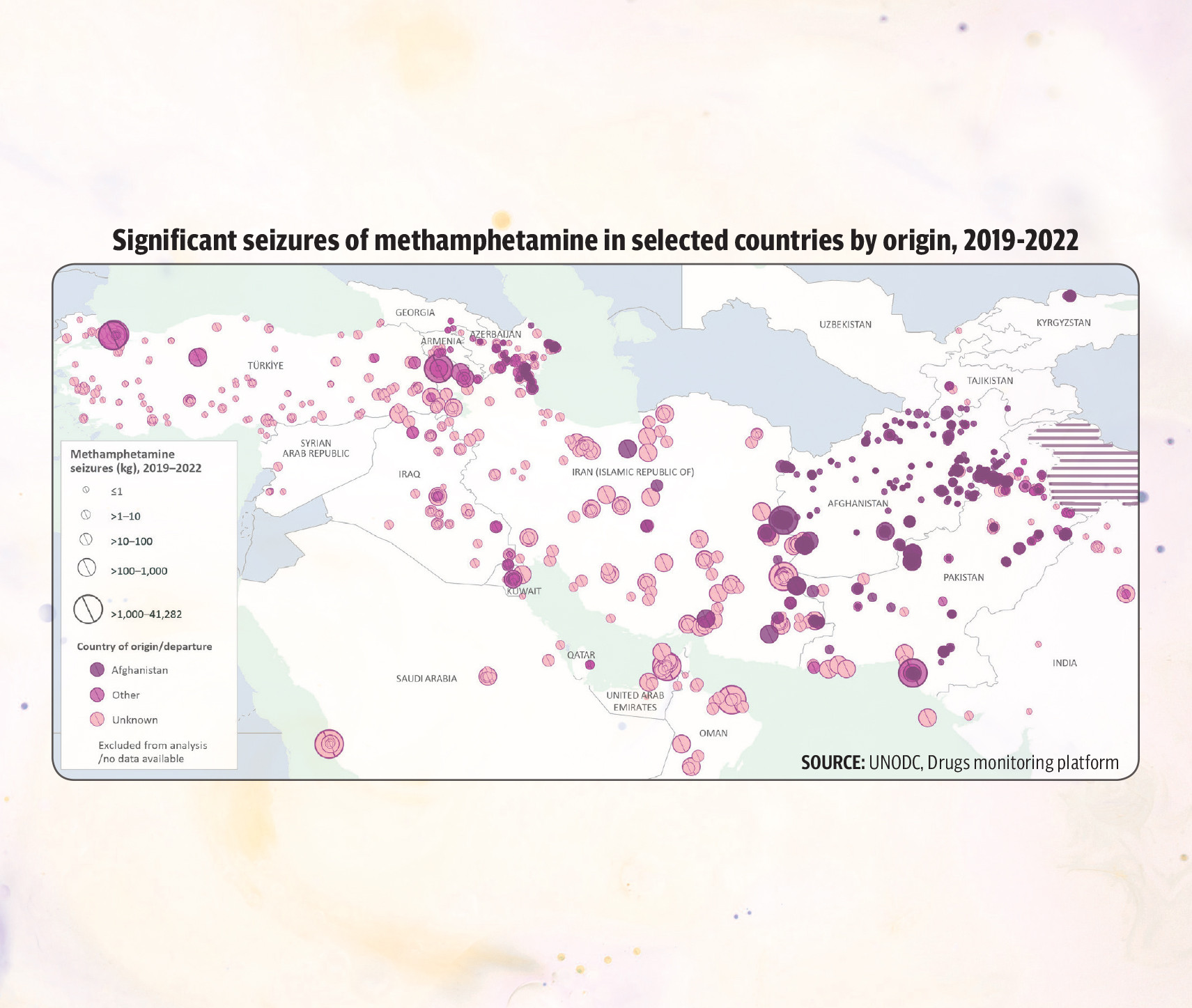
The appeal and consequences
Professor Dr. Javed Iqbal, a renowned Laparoscopic surgeon, sheds light on the dangers of ICE. "ICE is completely different from other intoxicating substances," he warns. "It is found in the form of crystals and people carry it in their bodies in different ways. One way of carrying it is by burning the crystals and the smoke is carried directly inside."
Dr. Iqbal explains that Methamphetamine, the key chemical in ICE, was initially used to enhance alertness. "Methamphetamine is a medicine that people used to take to be alert," he recalls. "Like, before an exam, there used to be a medicine called Ritalin that if they used to take it, they would not sleep, they would stay awake and study."
However, he notes that this medication has severe drawbacks. "In the beginning, it seems that I am awake and I am very alert, but actually, during that time, their retention power, that is, while studying, they kept studying for 10 hours, but actually, its retention power is very low."
While highlighting the effects of ICE that are rapid and devastating, he said, "As soon as it is taken, it starts affecting within 3-4 puffs and after 2-3 minutes, it starts affecting. This disrupts the body's chemical system, particularly Dopamine production. There is a system in our body that produces a chemical that is called Dopamine. Dopamine is our pleasure hormone and our reward hormone." However, ICE causes Dopamine receptors to inflate over time, leading to increased tolerance.
Dr. Iqbal also highlights the severe psychiatric consequences of ICE use. "The most important thing is that it starts having psychiatric changes," he cautions. "In other words, if he does not use it, then during that time, he will start having strange thoughts, in which the most dangerous are Paranoid thoughts. These thoughts can lead to erratic behavior and altered psychological temperament,” he said adding that the receptors of Dopamine start inflating over time. Therefore, your condition will be with 4 puffs next time. “After that, your duration will decrease and then you will gradually get used to it.”
He advises parents to be vigilant, "Now how do we know that one of our relatives has started doing this? So if you suddenly see a big change in behavior, you find out that they have started being hyperactive more than necessary, then you can assume that this is a possibility. And the second important thing is that please keep an eye on your children's company."
Dr. Iqbal emphasizes the economic and social factors driving ICE addiction. "This is not a medicine that you get from the market like a cigarette. For this, you have to be in a special company. You cannot expose it. So how much money will he/she get from pocket money? How much money will they steal from parent’s wallet? In the end, you will have to do drug peddling."
Shedding some light on drug peddling he said that after this moment, an addicts will tell their friend that it was great, you also try it. “If he starts taking drugs, he will also enjoy it. And in this case, when he buys it, you will also get some share in it. So many drug peddlers are not doing it for money. They are doing it for their own addiction. They are forced to get involved in this trafficking,” he added.
This drug is not easily available like other drugs. These are supplied to people who can sell at the educational institutions, organizes late night parties and other illegal activities and that is from where the addicts buy it.
Dr. Iqbal stresses the importance of love and rehabilitation in overcoming addiction, "If God forbid you find out that your child is addicted, then this is the child who needs a lot of love. Now you start slapping him, you start scolding him, you start telling him what you did. This will be a great injustice to that child. That child is in need of love. Put him back in your lap and then rehabilitate him, rehabilitate him properly."
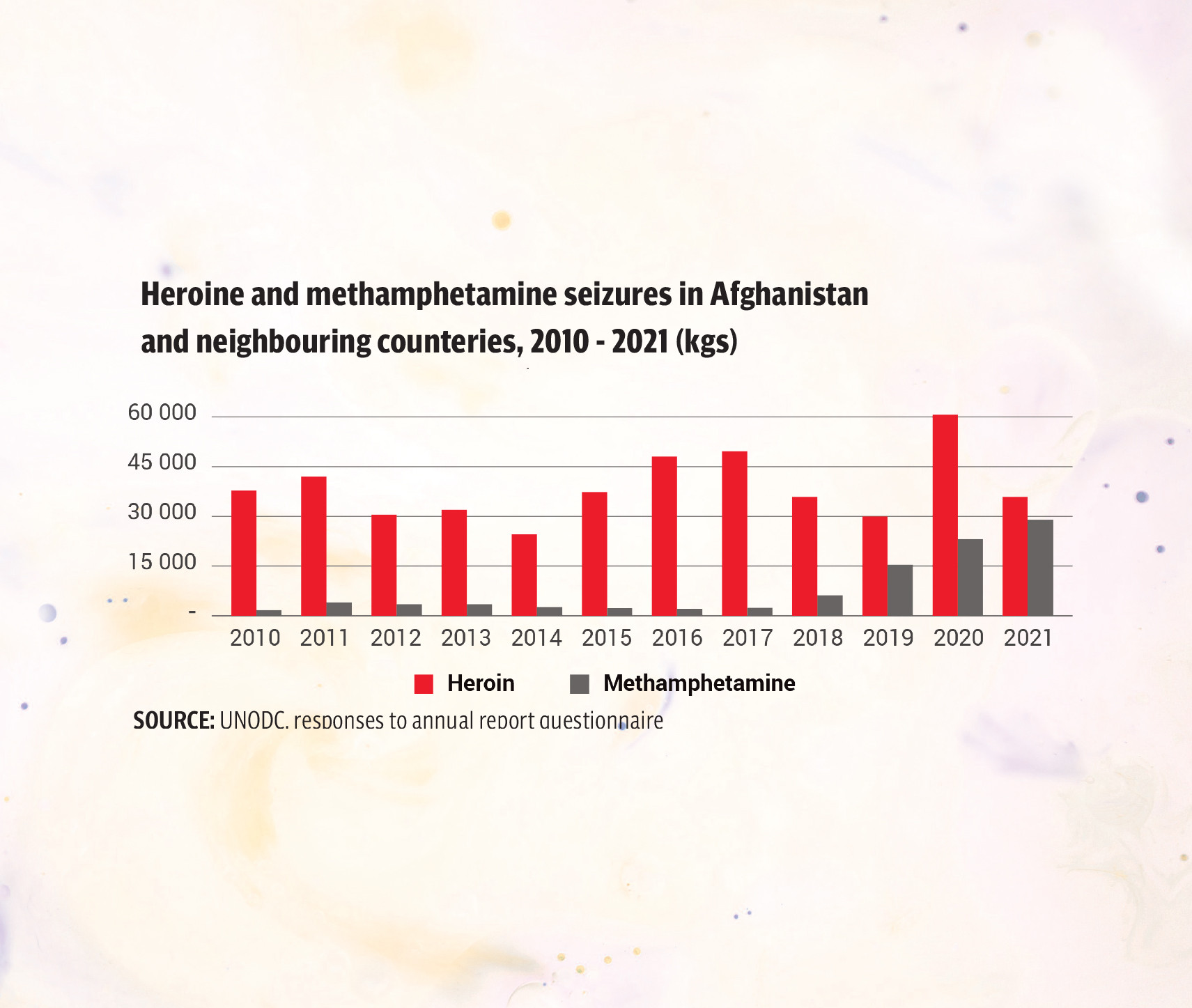
From experimentation to addiction
Ice, a potent form of methamphetamine, promises an irresistible rush of energy and euphoria, but at a steep price. The speed and strength of this ‘rush’ vary, with ICE delivering stronger, fast-acting effects that can lead to binges and addiction. Users chasing the high will find their tolerance levels escalating, requiring increasingly higher doses to achieve the same effect.
This vicious cycle is all too familiar to Atif, a former ICE addict. "I wanted peace," he recalls. "I wanted to escape family conflicts." But soon, he found himself trapped in addiction's grip. "The more I used ice, the higher my tolerance levels got. I became lazy, inactive, and depressed. Negative thoughts haunted me,” admits Atif.
The science behind ICE addiction lies in its impact on hormone release, particularly dopamine and serotonin. Dopamine regulates reasoning, movements, and happiness, while serotonin elicits pleasure. Smoking ICE instantly bolsters these hormones, increasing dopamine levels by up to 1,000%. Users experience intense euphoria and drive, feeling invincible and connected to their surroundings. However, this fleeting high lasts only 8-24 hours, leaving users craving another dose to function.
As Atif's story illustrates, individuals struggling with depression, low family support, or feelings of emptiness without the high are particularly susceptible to ICE addiction. Continued use erodes the brain's natural ability to produce ‘happy’ hormones, rendering users dependent on ICE to navigate daily life. Simple tasks like working, studying, or socializing become impossible without the drug.
Long-term misuse can also trigger ice-induced psychosis, characterized by paranoid delusions, hallucinations, and violent behavior.
Recovery from ICE addiction demands courage, love, and determination. Atif's journey serves as a beacon of hope, reminding us that overcoming addiction is possible. "Make an intention, trust yourself, and seek family support," he advises. With the right support and mindset, breaking the cycle of ICE addiction can be achieved, and a new path to wellness and redemption can begin.
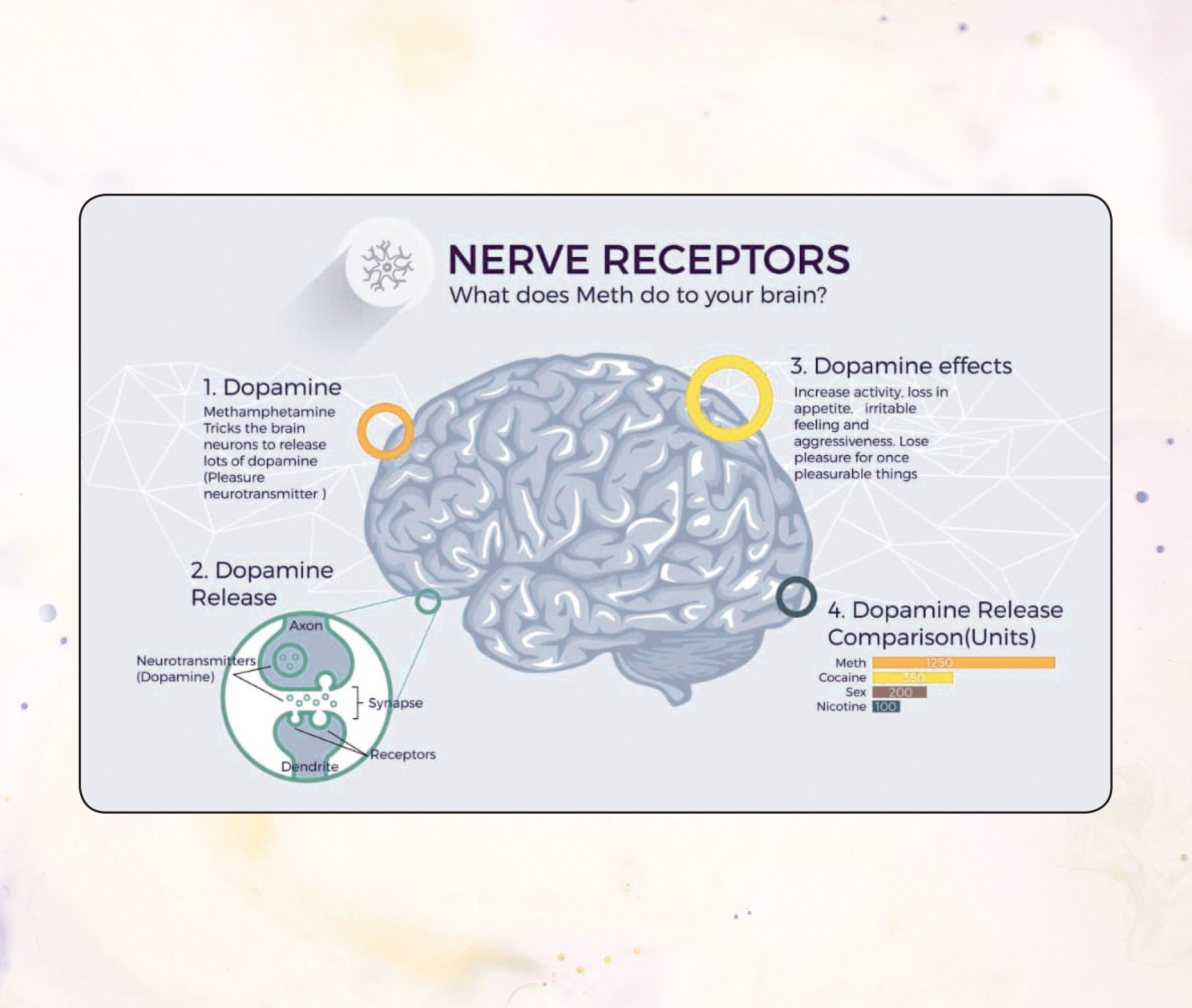
Breaking free
Recovery from ICE addiction seems tough, but it's achievable. Breaking free requires a comprehensive approach that addresses physical, emotional, and psychological aspects. Professional help, support networks, self-care, spiritual growth, and therapy are essential components of the recovery journey.
Rehabilitation centers offer structured programs, counseling, and medical assistance to manage withdrawal symptoms. Family and friends play a crucial role in providing emotional support and encouragement. Engaging in physical activities, hobbies, and relaxation techniques helps rebuild physical and mental strength.
Spiritual growth and faith can provide purpose, motivation, and a sense of belonging. Therapy, such as cognitive-behavioral therapy (CBT), helps individuals address underlying issues and develop coping strategies. With the right support and resources, overcoming ICE addiction becomes a reality.
According to Atif, a former ICE addict, the journey to recovery begins with a simple yet profound step. His story is a proof to the human spirit's capacity for transformation. Sitting confidently, his lovely daughter by his side, he shares his remarkable journey. "I was addicted to ICE for 2.5 years," Atif begins, his voice laced with a mix of regret and determination. "I never smoked a cigarette, but ICE consumed me. I was a sportsman, I never inhaled, but ICE, it was different."
"I used to go to that side because I wanted peace," Atif recalls. "But one thing that I lost – the peace that I was looking for – I did not get it." The emptiness and desperation that fueled his addiction are all too familiar.
The grip of ICE was relentless. "It's expensive, sir, from 600 to 2000 per day per gram," Atif reveals. "Monthly, it costs 30 to 40 thousand. The financial burden was crippling, but the emotional toll was far greater. I left that gathering and settled with my family," he shares.
Atif's advice to others struggling with addiction is simple yet profound. "The first thing is, the one who wants to come out should first intend to come out." For Atif, his daughter was the catalyst for change. "The biggest reason is my daughter. When I felt the need, I wanted to come out. I did not want to go to that side, so I started playing with her."
Self-belief and family support are also critical. Atif emphasizes, "First of all, make an intention, then trust that in order to come out of this, he should believe in himself. The biggest way to come out is to leave that company, first of all, leave that gathering." His experience underscores the importance of leaning on loved ones during the recovery process.
Overcoming withdrawal symptoms requires perseverance. Atif recalls, "The first 15 days are difficult. You will feel that there are walls, you will feel pain in your head, and after 30 days, everything will be normal. In three months, your body will be completely healed."
On answering the question on what are the vital support in recovery, he said, "Physical activity and family support. You have to live with your child and keep encouraging him. Like my wife did at that time, she had a belief that you can leave, and she told me every day that you can leave."
Ultimately, faith and self-trust are essential. Atif's words resonate, "Religious practice, faith and trust yourself."
Today, Atif serves as a beacon of hope for those trapped in addiction's vicious cycle. "Inshallah, I will live a happy life," Atif says, his smile radiant. His journey from darkness to light is a reminder that recovery is possible, that with courage, love, and determination, anyone can overcome.
As individuals progress in their recovery, physical health improves, mental clarity returns, emotional balance restores, relationships heal, and purpose and meaning are rediscovered. Recovery is a journey, not a destination. Each day presents opportunities for growth, healing, and renewal.
If you or someone you know struggles with ICE addiction, seek help. Support hotlines, rehabilitation centers, and online resources offer guidance and support. Breaking free from the grip of ICE addiction opens doors to a brighter future, filled with hope, healing, and redemption. With determination and the right support, anyone can overcome ICE addiction and start anew.
Atif's story is not unique, but his bravery in sharing it is. His message to parents is urgent. "Take care of your children, be their friend, give them company." His words echo the importance of connection and community in preventing addiction.
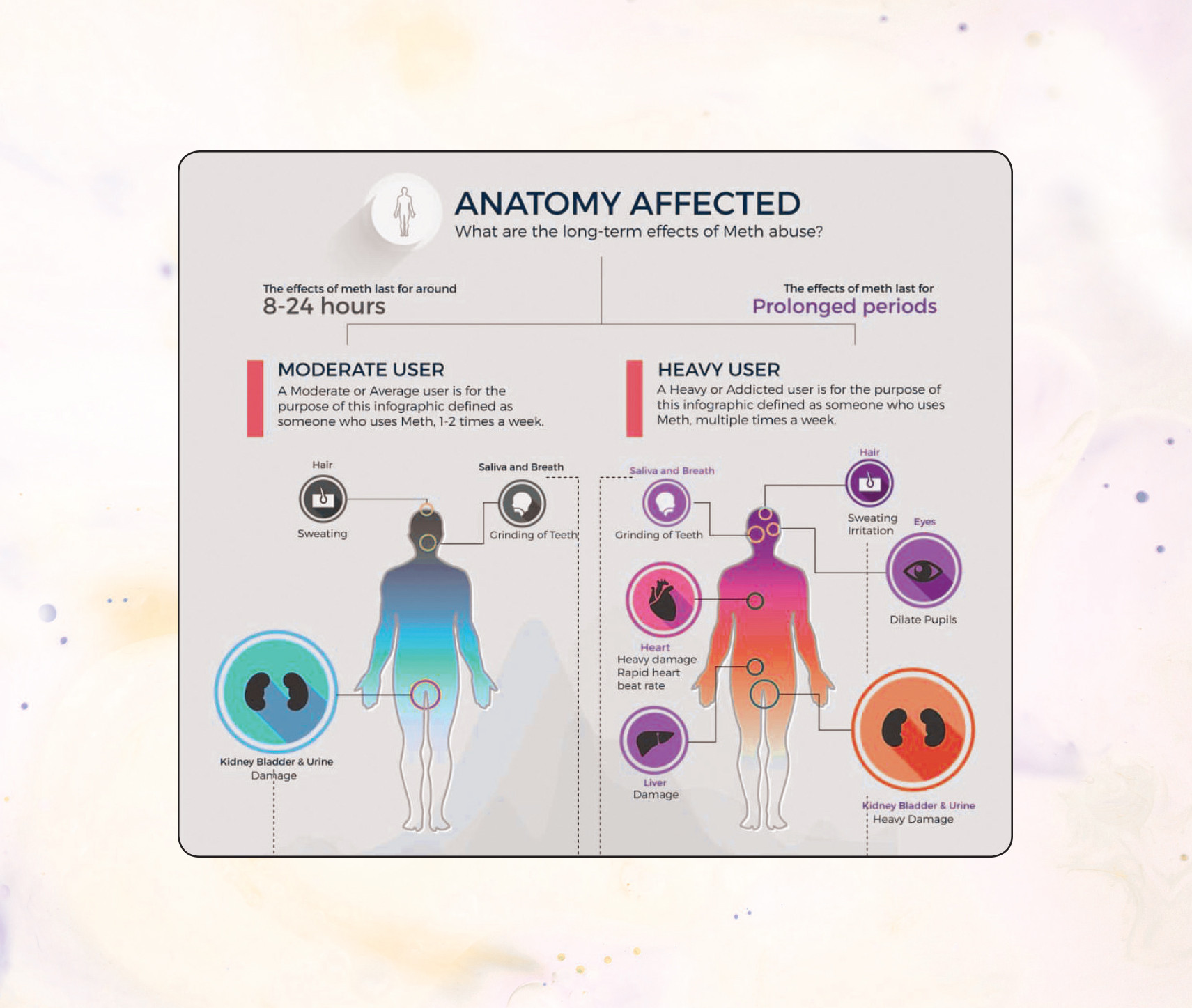
The way forward
Pakistan is making significant strides in combating the rising methamphetamine epidemic through collaborative efforts between government agencies and non-governmental organizations (NGOs). The Anti-Narcotics Force (ANF) made a monumental breakthrough in May 2024 by seizing 224 kilograms of methamphetamine, or "ICE," at the Karachi port. This historic bust highlights the importance of continued vigilance and international cooperation in fighting drug trafficking.
The ANF plays a pivotal role in disrupting the supply chain of illicit substances. Their efforts focus on intercepting drug consignments at ports and borders, apprehending suspects involved in smuggling, and collaborating with international agencies to share intelligence and best practices.
Non-governmental organizations, such as the Pakistan Youth Organization (PYO), complement government efforts by focusing on demand reduction and rehabilitation. PYO's initiatives include prevention programs, rehabilitation centers, and community outreach. Their collaboration with international organizations facilitates knowledge sharing and resource mobilization.
For individuals overcoming ice addiction, maintaining long-term recovery requires ongoing effort and commitment. The way forward involves cultivating a supportive environment, nurturing personal growth, and embracing a healthier lifestyle. This includes surrounding oneself with positive influences, such as family, friends, and support groups like NA Progressive Group or SMART Recovery Program.
Nurturing personal growth is also crucial, achieved through mindfulness practices like meditation and yoga, engaging in hobbies, and setting realistic goals. Adopting healthy habits, including regular exercise, balanced nutrition, and adequate sleep, promotes physical and mental well-being.
Rebuilding relationships damaged by addiction requires open communication, making amends, and cultivating empathy. Discovering new passions and interests through education, volunteering, or spiritual practices helps individuals find purpose and meaning.
Staying vigilant is essential, recognizing triggers and developing coping strategies. Regularly assessing progress and maintaining a support network ensures sustained recovery.
Pakistan's government and NGOs are working together to disrupt trafficking networks, educate vulnerable populations, and provide rehabilitation services.
Through sustained cooperation and commitment, Pakistan can mitigate the impact of methamphetamine and promote a healthier, safer society. Overcoming ice addiction requires persistence, support, and the right mindset. With the right approach, anyone can overcome addiction and live a fulfilling life.
By combining government initiatives, NGO support, and individual commitment, Pakistan can effectively address the methamphetamine crisis. Together, a brighter future free from addiction is possible.
